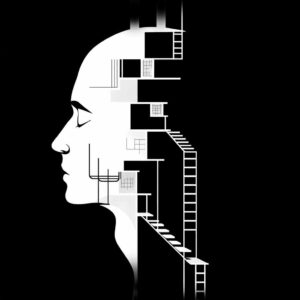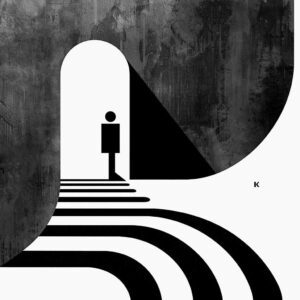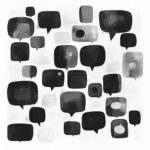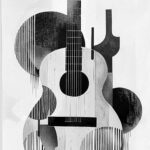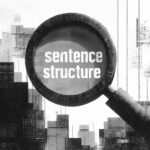What Is a Framing Device?
A framing device, or frame story, is a narrative technique where an initial story is presented to set the stage for a more emphasized secondary story or a series of shorter stories. It involves one overarching story that contains one or more secondary stories. The primary narrative sets up a situation where the secondary stories can unfold. This technique provides context, adds layers of meaning, and creates a rich, complex structure. The framing device can introduce the main story, provide commentary, or even conclude the narrative, enhancing the overall impact. A framing device can offer several advantages:
- Contextualization: It provides a context for the main narrative, helping the audience understand the setting, characters, and themes.
- Multiple Perspectives: It allows for multiple viewpoints, making the narrative richer and more nuanced.
- Suspense and Engagement: By starting with a frame story, the audience’s curiosity is piqued, keeping them engaged as they seek to understand how the inner stories relate to the frame.
- Structure and Unity: It offers a cohesive structure that ties different elements together, providing a sense of unity to diverse narratives.
Examples of Framing Devices in Literature
1. The Canterbury Tales by Geoffrey Chaucer
Overview: Chaucer’s classic collection of stories is a prime example of a framing device. The main story involves a group of pilgrims traveling to Canterbury. To pass the time, each pilgrim tells a story, leading to a series of diverse and entertaining tales.
Effectiveness: This structure allows Chaucer to present a wide array of characters and social commentary, each story reflecting different aspects of 14th-century English society.
2. Frankenstein by Mary Shelley
Overview: Mary Shelley’s Frankenstein uses a framing device through a series of letters written by an explorer named Robert Walton. Walton recounts his encounter with Victor Frankenstein, who then narrates his own story about creating the monster.
Effectiveness: The letters provide a layered narrative, adding credibility and depth to Victor’s extraordinary tale. They also offer a different perspective on the events, enhancing the theme of obsession and ambition.
Life of Pi by Yann Martel
Overview: In Life of Pi, the main narrative is framed by a conversation between the author and the adult Pi, who recounts his survival story of being stranded on a lifeboat with a Bengal tiger.
Effectiveness: This device provides a reflective and introspective layer, emphasizing themes of faith, survival, and the nature of storytelling itself.
Wuthering Heights by Emily Brontë
Overview: Wuthering Heights employs a complex framing device where Mr. Lockwood, a tenant, reads the journals of Nelly Dean, the housekeeper, who recounts the tumultuous history of the Earnshaw and Linton families.
Effectiveness: The layered narration adds depth and mystery, gradually revealing the dark and passionate story of Heathcliff and Catherine through multiple perspectives.
The War of the Worlds by H.G. Wells
Overview: The novel is framed as a first-person account by an unnamed narrator who documents the Martian invasion of Earth. The narrator reflects on the events after they have occurred, providing both personal and scientific perspectives on the invasion.
Effectiveness: This framing device gives the story a sense of immediacy and realism, making the extraordinary events more believable. It also allows Wells to explore themes of human vulnerability and the limits of scientific understanding.
Cloud Atlas by David Mitchell
Overview: The novel consists of six interconnected stories spanning different time periods and genres, each nested within the others. The stories are presented in a unique structure that forms a “pyramid” – starting in the past, moving forward in time, then reversing back.
Effectiveness: This intricate framing device underscores the novel’s themes of interconnectedness, reincarnation, and the ripple effects of actions across time. The nested structure challenges readers to see the larger picture and understand the overarching narrative connections.
The Book Thief by Markus Zusak
Overview: The story is narrated by Death, who frames the tale of Liesel Meminger, a young girl living in Nazi Germany. Death’s narration provides a unique perspective on the events of the story.
Effectiveness: This framing device adds a poignant and philosophical layer to the narrative, highlighting the themes of mortality, the human spirit, and the power of words. Death’s perspective offers a distinct and compelling view of the story’s events.
Examples of Framing Devices in Film
Framing devices are frequently used in films to add depth and structure to the narrative. These techniques can provide context, create suspense, and enhance the overall storytelling experience. Here are some notable examples:
Forrest Gump (1994)
Overview: The film opens with Forrest Gump sitting on a bench, telling his life story to various strangers who join him throughout the day. This bench scene serves as the framing device, interspersing his tales with real-time interactions.
Effectiveness: This device allows the audience to see Forrest’s life unfold through his perspective while maintaining a sense of continuity and connection to the present.
The Princess Bride (1987)
Overview: An elderly man reads the story of The Princess Bride to his sick grandson. The film transitions between the grandfather reading and the fantasy story he narrates.
Effectiveness: This framing device adds a layer of charm and nostalgia, highlighting the power of storytelling and the bond between generations.
Titanic (1997)
Overview: The film begins with an elderly Rose Dawson Calvert recounting her experience on the Titanic to a team of treasure hunters. Her narration frames the main story set in 1912.
Effectiveness: This approach provides historical context and emotional depth, allowing the audience to connect with the events on a personal level.
Inception (2010)
Overview: The film employs a complex narrative structure with dreams within dreams. The central framing device involves a mission to plant an idea in someone’s subconscious, with each level of the dreamscape adding a layer to the story.
Effectiveness: This intricate framing device allows for a deep exploration of themes like reality, consciousness, and time, making the narrative both intellectually stimulating and emotionally engaging.
The Grand Budapest Hotel (2014)
Overview: The story is framed by a young writer visiting the dilapidated Grand Budapest Hotel and learning about its history from the elderly owner, Zero Moustafa. Zero’s recounting serves as the primary narrative.
Effectiveness: This multi-layered framing device adds richness to the storytelling, offering different perspectives and a sense of nostalgia.
Saving Private Ryan (1998)
Overview: The film begins and ends with an elderly veteran visiting the Normandy American Cemetery. His memories frame the main narrative set during World War II.
Effectiveness: This framing device provides a poignant bookend to the story, emphasizing the themes of sacrifice, memory, and the passage of time.
The Shawshank Redemption (1994)
Overview: The story is narrated by Red, an inmate at Shawshank State Penitentiary. His perspective and commentary frame the central story of Andy Dufresne’s imprisonment and eventual escape.
Effectiveness: Red’s narration offers insight and adds a personal touch to the story, enhancing the emotional resonance and thematic depth.
Memento (2000)
Overview: The film uses a unique framing device where the narrative is presented in reverse chronological order, interspersed with black-and-white scenes that move forward in time, culminating in the convergence of the two timelines.
Effectiveness: This innovative structure mirrors the protagonist’s short-term memory loss, creating a gripping and immersive experience for the audience.
Examples of Framing Devices in Advertising
Advertising campaigns often rely on creative strategies to connect with audiences. One such strategy is the use of a framing device, a narrative technique that provides structure to a story. In literature and film, a framing device sets the stage for the main narrative and can appear at the beginning, end, or intermittently throughout the story. In advertising, this technique can effectively tie together various elements of a campaign, making the message more cohesive and engaging.
In the context of advertising, a framing device can be used to create a unified theme across different media and messages. By establishing a consistent narrative framework, brands can strengthen their identity and message, making their campaigns more memorable and effective.
Coca-Cola’s “Share a Coke” Campaign
Overview: Coca-Cola’s campaign involved personalized bottles with names on them. The framing device was the story of sharing a Coke with someone whose name is on the bottle.
Effectiveness: This approach personalized the product, creating a story around each bottle and encouraging people to share their experiences on social media, thus generating organic marketing.
Apple’s “Shot on iPhone” Campaign
Overview: Apple used a framing device where real users’ photos and videos shot on iPhones were showcased. Each photo or video is a story in itself, framed by the overarching narrative of showcasing the camera’s quality.
Effectiveness: This user-generated content approach not only demonstrated the product’s capabilities but also built a community of users contributing to the campaign, enhancing brand loyalty.
Dove’s “Real Beauty” Campaign
Overview: Dove’s campaign featured a series of short films and ads where real women shared their experiences and insecurities about beauty. The framing device was the contrast between how women perceive themselves and how others see them.
Effectiveness: This emotional storytelling approach resonated with many women, shifting the focus from conventional beauty standards to self-acceptance and real beauty, strengthening Dove’s brand image.
Johnnie Walker’s “The Man Who Walked Around the World” Ad
Overview: This ad tells the story of the brand’s history and evolution, framed by the narrative of Johnnie Walker himself, metaphorically walking through different eras and milestones.
Effectiveness: The continuous walking journey visually and narratively represents progress and perseverance, aligning with the brand’s tagline, “Keep Walking,” and reinforcing its legacy and values.
Airbnb’s “Belong Anywhere” Campaign
Overview: Airbnb used personal stories of hosts and guests to highlight unique travel experiences. The framing device is the individual stories that illustrate the broader narrative of global belonging and connection.
Effectiveness: By focusing on real-life experiences, Airbnb effectively communicated its value proposition of offering authentic and personal travel experiences, fostering a sense of community and trust.
The Versatility of the Framing Device
Framing devices extend beyond literature, film, and marketing into various other areas of writing and storytelling, including journalism, public speaking, educational content, and even video games. In journalism, a framing device can provide context and background, making complex news stories more relatable and easier to understand. For instance, an article about climate change might begin with a personal story of a farmer affected by drought, framing the broader scientific discussion within a human experience. In public speaking, speakers often use framing devices by starting with a personal anecdote or a thought-provoking question, setting the stage for their main points and making their messages more impactful. In educational content, framing devices can transform dry facts into engaging narratives. For example, a history lesson can be framed through the diary entries of someone who lived during the period being studied, thus bringing historical events to life. In video games, framing devices are used to immerse players in the storyline, often through cutscenes or in-game diaries that provide background and depth to the game’s world and characters.
Framing devices are essential when a story or project benefits from added context, emotional depth, or a multi-layered narrative structure. For example, complex stories with multiple timelines, such as historical epics, or those aiming to evoke strong emotional connections, like personal memoirs, are well-suited for framing devices. They help the audience navigate intricate plots or themes and enhance engagement. However, framing becomes unnecessary in straightforward, concise narratives where the primary focus is clarity and directness, such as instructional manuals, news reports, or certain types of genre fiction like thrillers and action stories. In these cases, a framing device can overcomplicate the narrative, detract from the main message, or slow down the pacing. The key is to evaluate whether the added layer of a framing device will enrich the story or simply clutter it, ensuring that its use aligns with the project’s goals and the audience’s needs.


